As news of the Queen of England’s passing spread in the press back in early September, mixed in among the tributes and retrospectives on a long life of service were a few procedural pieces detailing the transition in leadership and a chain of events that would be (and in many cases, had been already) set in motion. There were public-facing events – speeches, swearings-in – and there were internal logistics and reconfigurations. Taken together, this preordained protocol and all of its choreographed particulars had a single code name, like something from a James Bond film: “Operation London Bridge.”
John Abrams is not – to my knowledge – a member of any royal family, and at age seventy-three he’s fit as a fiddle. But even before he had formally decided to retire at the end of this year from his role as CEO of South Mountain Company, the design/build firm he started on a whim in 1973, he and his team began meticulously planning for this inevitable transition, considering in great detail what it might mean for Abrams and the company. Through a series of internal discussions and retreats, Abrams and his leadership team codified the “Avalanche Scenario,” a nod to the founder’s penchant for risk-taking activities, which have been known to include jumping out of a helicopter on skis.
“We knew we needed a plan for what would happen if John got buried in an avalanche,” Abbie Zell, South Mountain’s communications coordinator and co-owner, told me. “How would we go on?”
Though that plan was formalized in 2014, the general question of company leadership and transition is one that Abrams and his colleagues at South Mountain have been investigating for decades, as part of a larger conversation about the nature of work, the challenges of balancing a successful career with a fulfilling personal life, and the moral and social responsibilities that come alongside growing a construction business on a resort island like Martha’s Vineyard.
In fact, it’s a conversation that Abrams has been having with himself for most, if not all, of his adult life.
Born in San Francisco, California, to a family of academics – his father was a physician and his mother a social worker and artist – Abrams was a committed student until about the eleventh grade, when a sudden shift in global consciousness began bubbling across the nation. However, it was the awareness of a potent, homegrown substance that reached him first from the north.
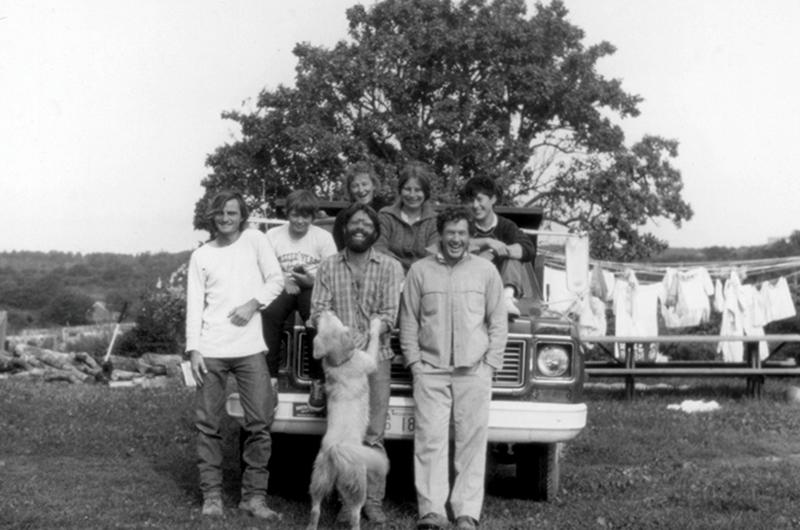
“The big change came for me in junior year, when down from La Honda came wafting that marijuana smoke,” Abrams recalled with an easy grin when we met on the porch of the West Tisbury home he shares with partner Kimberly Angell. This was the mid-sixties, and America was on the precipice of a cultural revolution. It was all a whole lot more interesting to the young Abrams than what was going on in the classroom. “There was too much happening for me to go to school,” he remembered. “I really started to check out then, or check in to someplace else.”
Still, at his parents’ urging he agreed to give college a try and enrolled at Wesleyan University in Connecticut, which seemed at first to be a good fit. “I took classes that fall in Sioux Indian singing, Indonesian gamelan,” he said. But the call of the open road and a new world order was ultimately impossible to ignore. “It was this time of massive change,” Abrams said. “The Vietnam War, the people in the streets, a repressive government. Life was so rich with experience in those times. The whole counterculture was just brewing.”
After leaving college later that year – “my claim to fame at Wesleyan was that I was the first person in the class of ’71 to drop out” – Abrams felt drawn to another emerging trend.
“The back-to-the-land movement was picking up steam,” he said. “People heading for rural America to try to figure out the tools of self-sufficiency and how to invent a new life. The summons of that back-to-the-land movement was so powerful that I went into it hook, line, and sinker.”
Leaving school began for Abrams a six-year odyssey that took him across this country and through parts of Canada before landing him in southern Vermont to see a friend at Marlboro College.
Three months later he’d joined a nascent commune growing in Guilford, Vermont, where he eventually met the two people who would accompany him on his journey to Martha’s Vineyard and the life and career he’s built here. One was Mitchell Posin, a friend from the commune with whom he would begin to build houses. The other was Christine Hudson, who would soon after become his wife. The two were married for forty-eight years until Hudson’s death in 2017.
Abrams and Posin began South Mountain Company in 1973, after leaving the commune and settling for a time in Rockland County, New York. With little more than a name – South Mountain, after the road on which they lived – and vague ambitions to specialize in cabinetry, they fell into home building somewhat by accident. Asked to build a house for an acquaintance, they took the project on with little carpentry experience. “We were living in a house with no electricity and every night we would have a ring of kerosene lamps on the floor in the living room, surrounding several books,” Abrams recalled. “We were reading about what we had to do the next day. That was a real crash course.”
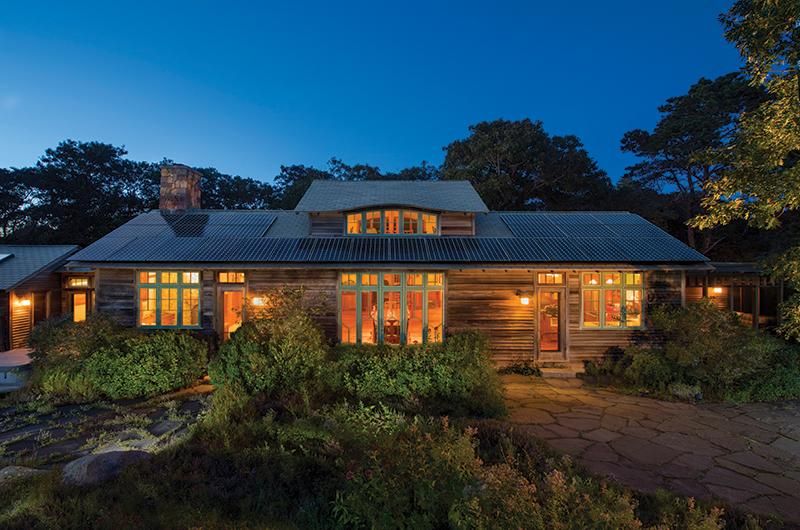
In 1975, Posin and Abrams, along with Hudson and their young son, Pinto, arrived on the Island for what was meant to be a temporary stint while they built a home for Abrams’s parents. “We thought we’d stay for six months,” Abrams laughed. “A year later, all the money is gone and somebody else asks us to build another house.”
For Abrams, used to wandering and living off the land in truly rural communities, adjusting to life on the Island took some time. “This place seemed so parochial and full of itself,” he admitted. “But, of course, we grew to love it, and we looked around a year or two later and felt like: ‘we live here.’ By then it was time for Pinto to go to school, and we actually had a business, which was completely antithetical to anything I ever thought about myself.”
Word spread about the newly transplanted builders. They set up shop at the Allen Farm in Chilmark, where Posin was by then living with his new wife, Clarissa Allen, and soon were collecting projects and a handful of like-minded employees. Many of the crew that would solidify around Abrams and Posin – who left the business in 1982 to devote his full attention to running the family farm with Allen – went on to work for or alongside South Mountain for the next two, sometimes three, decades. The names now read like a who’s who of veteran up-Island builders, past and present: Peter Ives, Heikki Soikkeli, Steve Sinnett.
Finding, hiring, and retaining skilled employees became a hallmark of Abrams and the company. “It really became my story,” Abrams said. “I was learning all of these things by the seat of my pants. Learning carpentry, learning cabinetry, learning business in a really rudimentary way. Learning all of these skills half-baked but with enough understanding that I knew how to find people who could do them all better than I could, and it turned into this collection of extraordinary people.”
With no training or background in running a business, Abrams began seeking advice from clients and friends. “I had this friend and mentor, Lee Halprin, who loved our work. Every summer we’d tour around and he’d see what we were doing. And one time he said, ‘The work is beautiful. Are you making any money?’ And I said, ‘No, we pretty much lose money on every job.’ And he said, ‘You know, you’ve got a really unique idea here: subsidized housing for the rich!’
“And it was like a dagger,” Abrams said, miming a knife to the chest. It was true, he realized. With a team of highly skilled builders who shared his vision for building beautiful, energy-efficient homes, they’d focused their efforts entirely on delivering high-quality finished results – without any real idea of what to charge for their labor. “That’s when I went, ‘Fuck this. I want to learn about business.’”
And he did. Today, South Mountain is a thriving design/build company with a national reputation, and Abrams has emerged as a trailblazer in the world of social entrepreneurship, serving on boards, offering advice, and speaking at conferences worldwide. Of particular note, South Mountain has not only been certified as a B-Corp – a company with a proven commitment to advancing the “triple bottom line” of profit, people, and the planet – but has also been awarded the highest accreditation score, putting it ahead of do-gooder corporate juggernauts like Patagonia and Ben & Jerry’s.
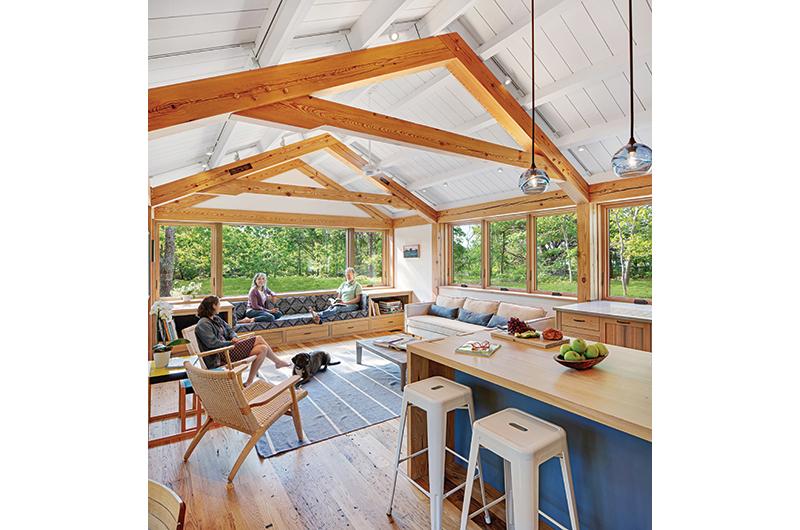
Over the years, Abrams has written countless articles and blog posts, and even published a book: Companies We Keep: Employee Ownership and the Business of Community and Place (Chelsea Green, 2008). In reading Abrams, or speaking to him for any length of time, it’s apparent that he delights in sharing not just his stories of success but the overarching narrative of his journey – the missteps, the false starts, the lessons he learned, and the surprising ways in which he learned them.
Take, for example, the day Abrams finally learned to turn a profit – schooling that came not from a book or class, but from a paying client.
“This client was a businessman, and he said to us: ‘I don’t want to pay more for this house than I should, but I want you to make a profit. So I’m going to teach you how to make a profit.’ And he did. That was a turning point,” he said.
Abrams’s self-directed education didn’t end with learning how to stay out of the red. As time went on, he began to understand that just as important as the work that South Mountain accomplished, the designing and building of sustainable homes, was the way in which the company would function, and the search for a corporate structure that would align with Abrams’s values, prioritizing balance, equity, and democracy in the workplace.
This practice of company-wide introspection began in 1986, when Ives and Sinnett, two of Abrams’s earliest hires, came to him with a problem. “They were saying, ‘We don’t want to start a business of our own; we want to spend our careers here,’” Abrams recalled. “‘But we need more than an hourly wage. We need a stake.’”
Abrams considered making the men partners, but, inspired by his days of communal living, he looked further into the future and chose a different path. “I thought, ‘If we do our job well, this is going to happen over and over again. Maybe there’s a structure that would welcome people in.’”
He began to research progressive models for business ownership. “The worker co-op was pretty under the radar at that time,” he said. “It was just so appealing. It also scared the shit out of me.”
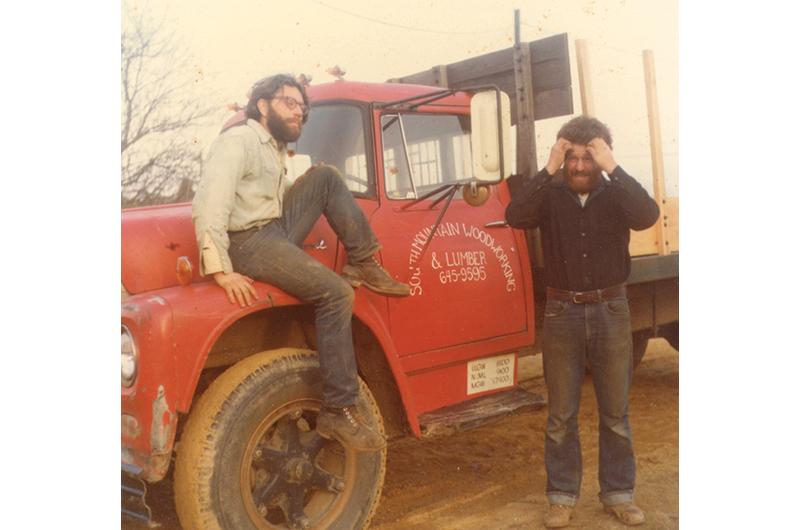
Abrams and the company hired a consultant who helped restructure the business into a worker-owned cooperative, meaning that each employee is given the option to buy in as an owner after five years. With ownership comes profit-sharing but also an expected – and highly regimented – level of commitment in decision-making.
“I take a lot of stupid risks,” he joked. But adopting the co-op model was a risk that paid off. Today, twenty-two of South Mountain’s employees are co-owners, and with a newly introduced “Path to Ownership” program, encouraging more active participation and increased transparency, he expects that new owners will continue to join the ranks each year.
Abrams took another risk in the mid-eighties that would further guide the mission of the company, again aligning business practices with his own moral compass. By this time, he and the rest of the Island were already seeing the alarming rate at which affordable housing was becoming out of reach for many year-round residents. It was growing into the crisis we recognize today, one in which Abrams couldn’t help but feel implicated, owning and operating a business that specialized in building second homes.
A few small projects for year-rounders were beginning to come his way, projects he wanted to complete for friends who shared his vision but who couldn’t afford to build on the pieces of land they’d secured.
Early on South Mountain adopted a practice it still in most cases adheres to today. “We never built anything that we didn’t design,” Abrams explained. So when new clients came to him with plans from a Boston-based architect, the company initially passed. But the clients were insistent that they wanted South Mountain to build it. Right away, Abrams thought about the Island friends and the modest homes they hoped to build, and he formulated a plan. He went to the clients and explained that he had two other “affordable” projects that he needed money to build, and he proposed an inflated bid to cover costs for all three homes at once.
“The client said: ‘Do it,’” Abrams remembered, still awed both by the outcome and his own audacity for suggesting the arrangement in the first place. “Our price was something like $40,000 more than the next bidder, and we got it.”
It was the one and only time South Mountain played this intermediary Robin Hood role so explicitly, but it instilled in Abrams the seed of a commitment he would nurture for the remainder of his career. “We realized that our clients were part of the cause of the affordable housing problem, and they could be part of the solution, if we educated them,” he said. “And that turned out to be the source of millions and millions of dollars in fundraising. These people already trusted us. We did not need to cultivate relationships; we just had to make the case, and they got it.”
So began Abrams’s long history as one of the Island’s most dedicated proponents of affordable housing. Over the years he has continued to actively connect his wealthy client base with local affordable housing causes, and has developed symbiotic relationships with the Island Housing Trust and the Dukes County Regional Housing Authority, designing and building forty-three year-round units, including three “pocket neighborhoods,” as well as providing support for employees on their own homes and consulting on a variety of projects Island-wide.
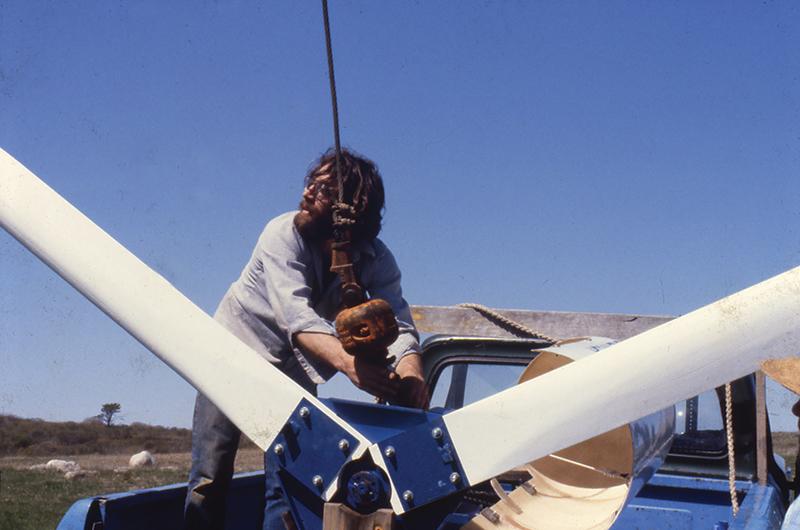
This ability to work in collaboration with other Island businesses and agencies in service of a shared goal is one Abrams traces back to his time in Vermont. “We learned on the commune how to make decisions together,” Abrams said. “We learned how to fail at it, and we were all learning together. There were no experts. That seeded an interest in community change for me.
“I think change has always been such a hallmark for me,” he said. “I want to see things change; I want to see what I can do to help them change. Even if it’s little changes.”
As Abrams gradually shifts out of his formal responsibilities at South Mountain – he plans to work part-time for a bit, eventually winnowing down his hours to zero – he feels confident that he’s leaving the company on solid footing, and well-prepared to handle whatever new challenges the next fifty years might bring.
In 2019, the company announced that COO Deirdre Bohan – who started in her twenties in an administrative role and has steadily worked her way up the company ladder – would transition to CEO at the end of this year, a role that is defined as a “first-among-equals” relationship with the rest of the leadership team.
Abrams envisions that the company will continue to develop initiatives that are already underway, focused primarily on new partnerships with Island nonprofits – in the last few years South Mountain has been involved in reimagining and building facilities for Camp Jabberwocky, Martha’s Vineyard Community Services, and Island Grown Initiative – as well as youth outreach and social justice.
“What’s happening in education, cultivating young people, what’s happening with equity and diversity, it’s extraordinary,” Abrams said of the company’s emerging priorities under new leadership. “I just see them taking it to completely new places. It’s very exciting. I feel like I’m leaving the company in the best shape that it’s ever been.”
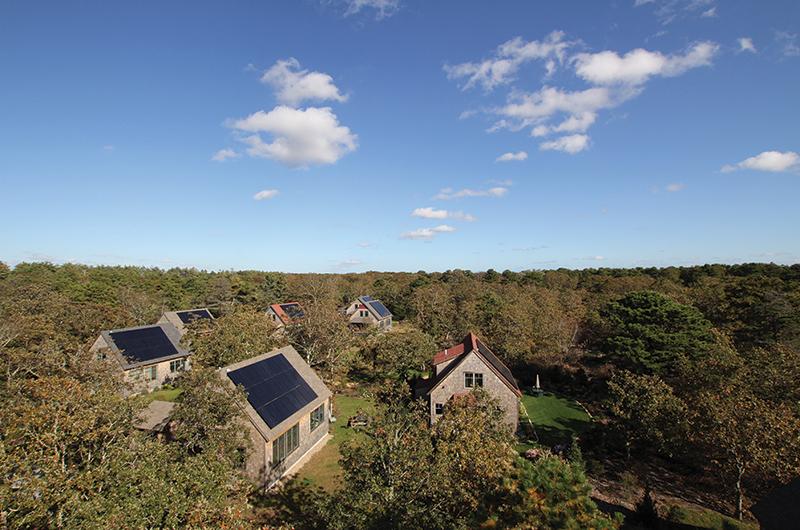
For his part, Abrams plans to dedicate much of his newfound free time to writing, anticipating a follow-up to his first book, as well as spending time with his children, Pinto and Sophie, a brood of grandchildren – six boys ranging from age one to thirty-one – and keeping fingers crossed for a great-granddaughter to one day add to the mix.
And he remains committed to his work in the community. Grassroots organizing, particularly in the arena of affordable housing, continues to be a sweet spot for Abrams, as it combines a passion for activism, a sense of professional and moral balance, and a lifelong practice of consensus-building and collaboration. An early supporter of the idea for an Island-wide housing bank when it first came up for a vote in 2005, Abrams and Angell both now serve on the executive committee of the Coalition to Create the Martha’s Vineyard Housing Bank (CCMVHB). A bill to earmark funds for its affordable housing initiatives was approved by voters this spring. Once the bill is finalized and filed, if approved by the state legislature and signed by the governor, it would return to the Island for a final vote.
Julie Fay, former executive director of Martha’s Vineyard Community Services (MVCS), was tapped by Abrams to serve as co-chair of the CCMVHB, alongside Edgartown Affordable Housing manager Arielle Faria. Having recently worked together on the construction of a new early childcare facility at MVCS, Fay knew to expect a level of patience, compassion, and long-term visioning from Abrams that she called “extraordinary.”
“John really listens,” Fay said, remembering early community meetings and a carefully considered attempt to rally the Island behind what was seen as a daunting proposal. “He was very open to the need for transparency, and to go as far out into the community as we could. We knew it would take a few years, and that was kind of controversial because people are into expediency. But he understood that the long-range success of the housing bank would be reliant on the sincere buy-in from everyone involved.”
The fact that Abrams is himself sincerely committed to the sustainability of the Island, for generations to come, Fay said, goes a long way toward convincing others to join the cause, whatever that cause may be. “He’s just a huge champion of the Island, and the people that live here,” she said.
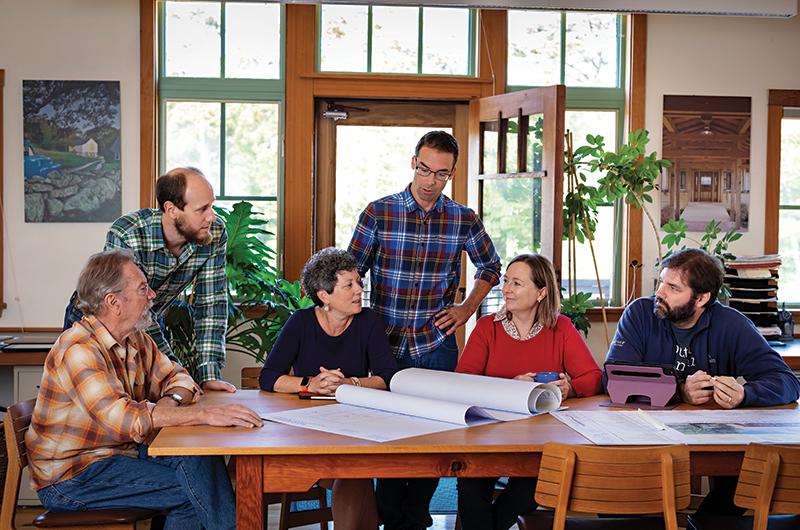
Looking forward, Abrams has his eye on what could perhaps be described as collaboration on steroids: Island regionalization. “Personally, I think we’ll know we’ve crossed a major bridge when this Island is one town,” Abrams said. “It needs to be one town. And that is, like, heresy to say that, I know, and I feel too old to do it. It feels like it would take twenty-five years to get it done. But it makes so much sense. Anything that makes so much sense can be done.”
In addition to community work, Abrams and Angell, an accountant, are working on a new venture: consulting for businesses on and off the Island with an emphasis on supporting transitions to cooperative structures. After his own successes with the model, he’s eager to share his expertise and encourage young business owners to think outside the box. “It’s always been a quest for meaning for me,” he said of his own history of asking hard questions and proposing unconventional solutions. “All you have to do is say those little idiosyncratic, out-of-bounds things to people enough times, and when they start to respond positively, even some of the time, you start to think: nothing is impossible.”
Even for someone who delights in a challenge, Abrams remains preternaturally upbeat, a disposition he credits in part to the teams of people who have grown up alongside him and the company they’ve created together.
“I feel like all of these years, I have been so supported, and we’ve been able to do something, to build something together.
“People say I have rose-colored corneas,” he laughed, before tracing his optimism back in a different, ancestral direction. “My grandfather was sent by his family from Russia at the age of ten, on a ship, to come to America where his aunt and uncle were. Here was this kid, standing on the bow of this ship as it pulled into New York Harbor on December 31, 1899, the turning of the century. The entire sky was lit up with fireworks, and he just felt like it was all for him. He fell in love with America. He had this incredibly positive outlook, and that was passed on to my dad, and to me. I’ve been lucky.”

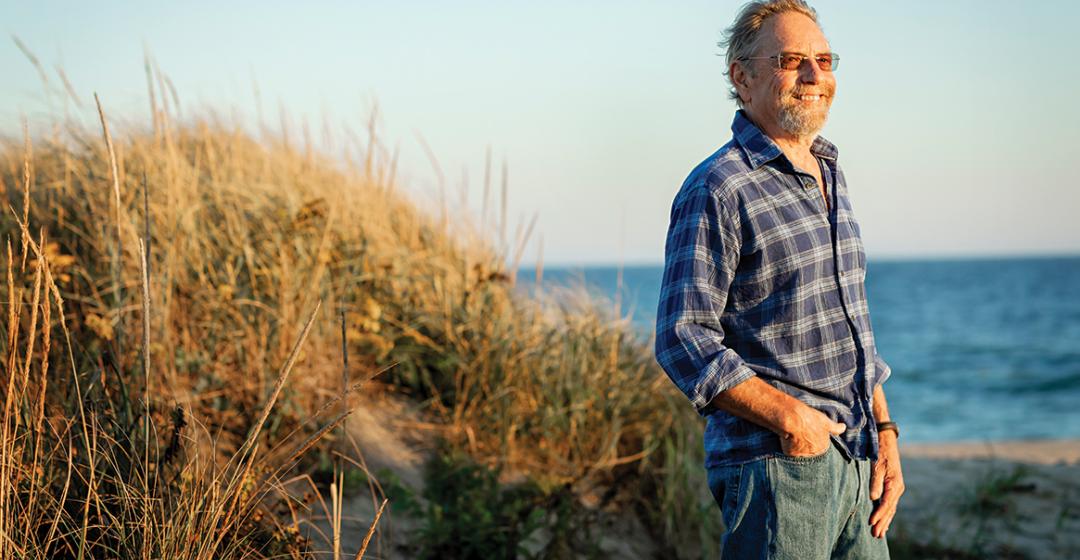


 1 comment
1 comment
Comments (1)